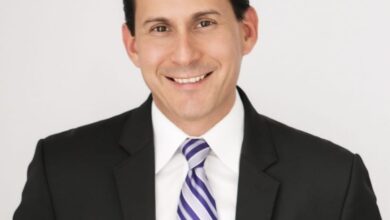What You Need To Know

Right from the start, the Paycheck Protection Program (PPP) has been full of surprises. Yesterday evening, the Small Business Administration (SBA) dropped another one: it released a third PPP Loan Forgiveness application – Form 3508S. This application is only for those who received $50,000 or less in total loan proceeds.
The Application
While it’s not the simple attestation idea that was bounced around in Congress last summer, the 3508S is a one-page application, with a second page for demographic information (which is important to fill out as well). Instead of having to show your forgiveness amount calculation as you do on the 3508EZ, you simply certify seven things:
- The dollar amount for which forgiveness is requested does not exceed the principal amount of the PPP loan and: a) was used to pay costs that are eligible for forgiveness (payroll costs to retain employees; business mortgage interest payments; business rent or lease payments; or business utility payments); b) includes payroll costs equal to at least 60% of the forgiveness amount; c) if a 24-week Covered Period applies, does not exceed 2.5 months’ worth of 2019 compensation for any owner- employee or self-employed individual/general partner, capped at $20,833 per individual; and d) if the Borrower has elected an 8-week Covered Period, does not exceed 8 weeks’ worth of 2019 compensation for any owner-employee or self-employed individual/general partner, capped at $15,385 per individual.
- I understand that if the funds were knowingly used for unauthorized purposes, the federal government may pursue recovery of loan amounts and/or civil or criminal fraud charges.
- The Borrower has accurately verified the payments for the eligible payroll and nonpayroll costs for which the Borrower is requesting forgiveness, and has accurately calculated the forgiveness amount requested.
- I have submitted to the Lender the required documentation verifying payroll costs, the existence of obligations and service (as applicable) prior to February 15, 2020, and eligible business mortgage interest payments, business rent or lease payments, and business utility payments.
- The information provided in this application and the information provided in all supporting documents and forms is true and correct in all material respects. I understand that knowingly making a false statement to obtain forgiveness of an SBA guaranteed loan is punishable under the law, including 18 USC 1001 and 3571 by imprisonment of not more than five years and/or a fine of up to $250,000; under 15 USC 645 by imprisonment of not more than two years and/or a fine of not more than $5,000; and, if submitted to a Federally insured institution, under 18 USC 1014 by imprisonment of not more than thirty years and/or a fine of not more than $1,000,000.
- The tax documents I have submitted to the Lender are consistent with those the Borrower has submitted/will submit to the IRS and/or state tax or workforce agency. I also understand, acknowledge, and agree that the Lender can share the tax information with SBA’s authorized representatives, including authorized representatives of the SBA Office of Inspector General, for the purpose of ensuring compliance with PPP requirements and all SBA reviews. _
- I understand, acknowledge, and agree that SBA may request additional information for the purposes of evaluating the Borrower’s eligibility for the PPP loan and for loan forgiveness, and that the Borrower’s failure to provide information requested by SBA may result in a determine
The Good News
All of these certifications also appear on the 3508EZ as well. However, this 3508S removes three important certifications:
- The Borrower did not reduce salaries or hourly wages by more than 25 percent for any employee during the Covered Period or Alternative Payroll Covered Period compared to the period between January 1, 2020 and March 31, 2020
- The Borrower did not reduce the number of employees or the average paid hours of employees between January 1, 2020 and the end of the Covered Period (other than any reductions that arose from an inability to rehire individuals who were employees on February 15, 2020, if the Borrower was unable to hire similarly qualified employees for unfilled positions on or before December 31, 2020, and reductions in an employee’s hours that a borrower offered to restore and were refused).
- The Borrower was unable to operate between February 15, 2020, and the end of the Covered Period at the same level of business activity as before February 15, 2020 due to compliance with requirements established or guidance issued between March 1, 2020 and December 31, 2020, by the Secretary of Health and Human Services, the Director of the Centers for Disease Control and Prevention, or the Occupational Safety and Health Administration, related to the maintenance of standards of sanitation, social distancing, or any other work or customer safety requirement related to COVID-19.
In short, this removes any reduction of forgiveness if the borrower had to let go of employees and didn’t hire them back and/or reduced wages. That eliminates a very onerous and tedious part of the application process for small borrowers.
According to the SBA, there are approximately 3.57 million outstanding PPP loans of $50,000 or less, totaling approximately $62 billion of the $525 billion in PPP loans. In addition, approximately 1.71 million PPP loans of $50,000 or less were made to businesses that reported having zero employees (presumably not counting the owner as an employee) or one employee. So hopefully this new application makes it simpler for a lot of people.
The Not-So-Good News
While fewer calculations and less documentation is nice, the instructions to the form still require borrowers to submit verification of payroll and non-payroll expenses for the covered period. That means for those of you with employees or non-payroll expenses included in your forgiveness calculation, you still need to gather and submit bank statements, tax forms, payment receipts, etc. with the application. You must also keep that documentation for six years after the date the loan is forgiven or repaid in full, in case representatives of the SBA asks for it.
Additionally, banks will need to quickly implement using this new application. As we’ve seen already, banks have different ways of applying and interpreting all of the changes that have come. Some banks like Bank of AmericaBAC haven’t been accepting applications until your covered period expires. On the other hand, banks like TD Ameritrade allow you to submit and choose the 24-week cover period, even if it’s not fully completed. And still banks like Fifth ThirdFITB are asking for payroll documentation from borrowers that don’t have any employees.
That means your lender may have specific requirements about the forgiveness process, so you’ll need to check in with them directly before you apply. And don’t be surprised if the rules change again. That’s been a constant throughout the PPP Program’s existence.
Follow me on Twitter or LinkedIn. Check out my website.





